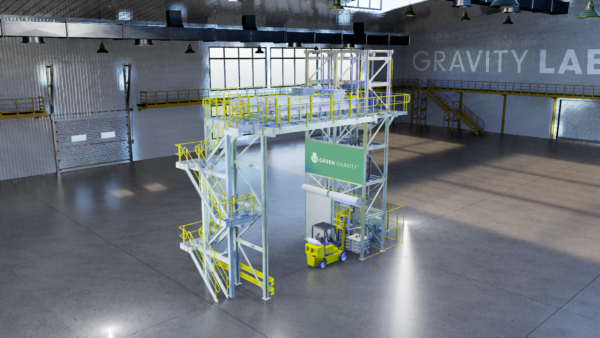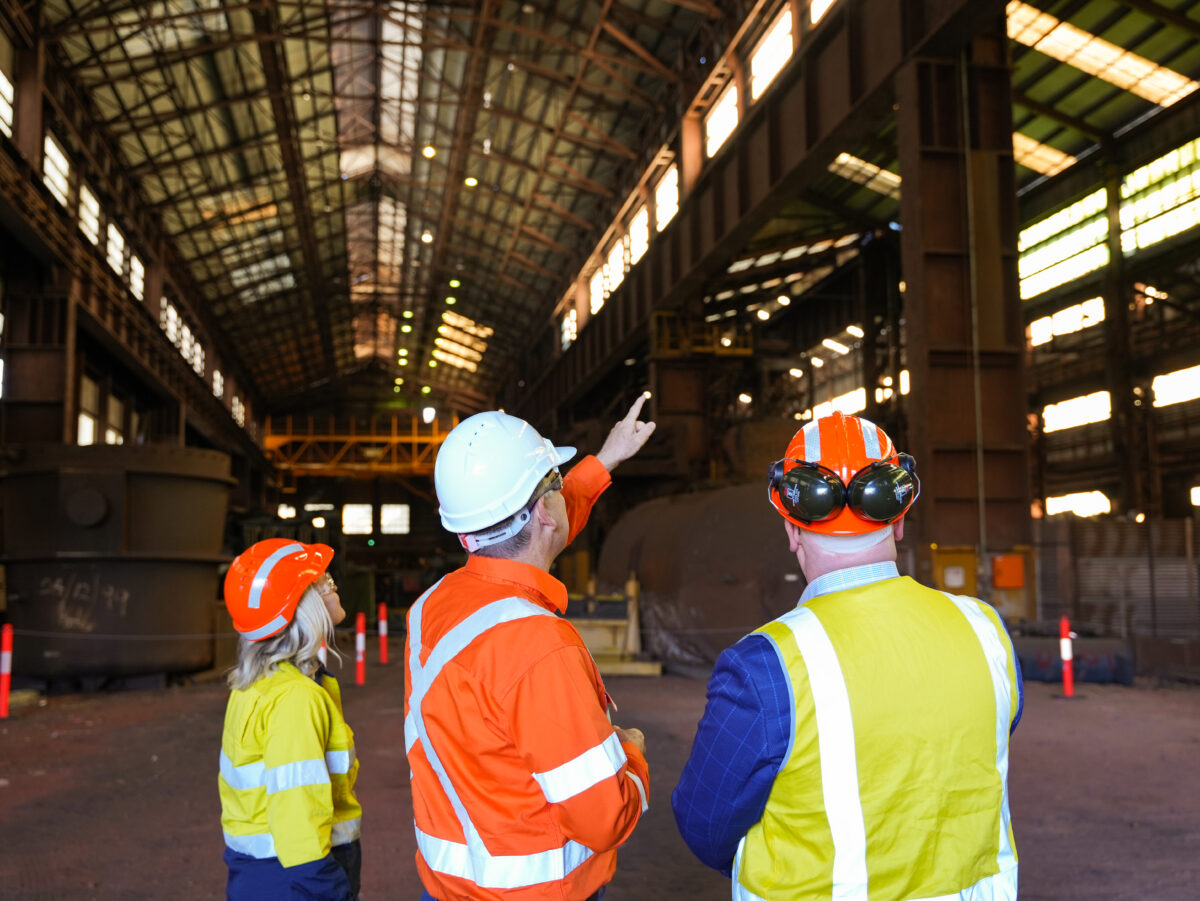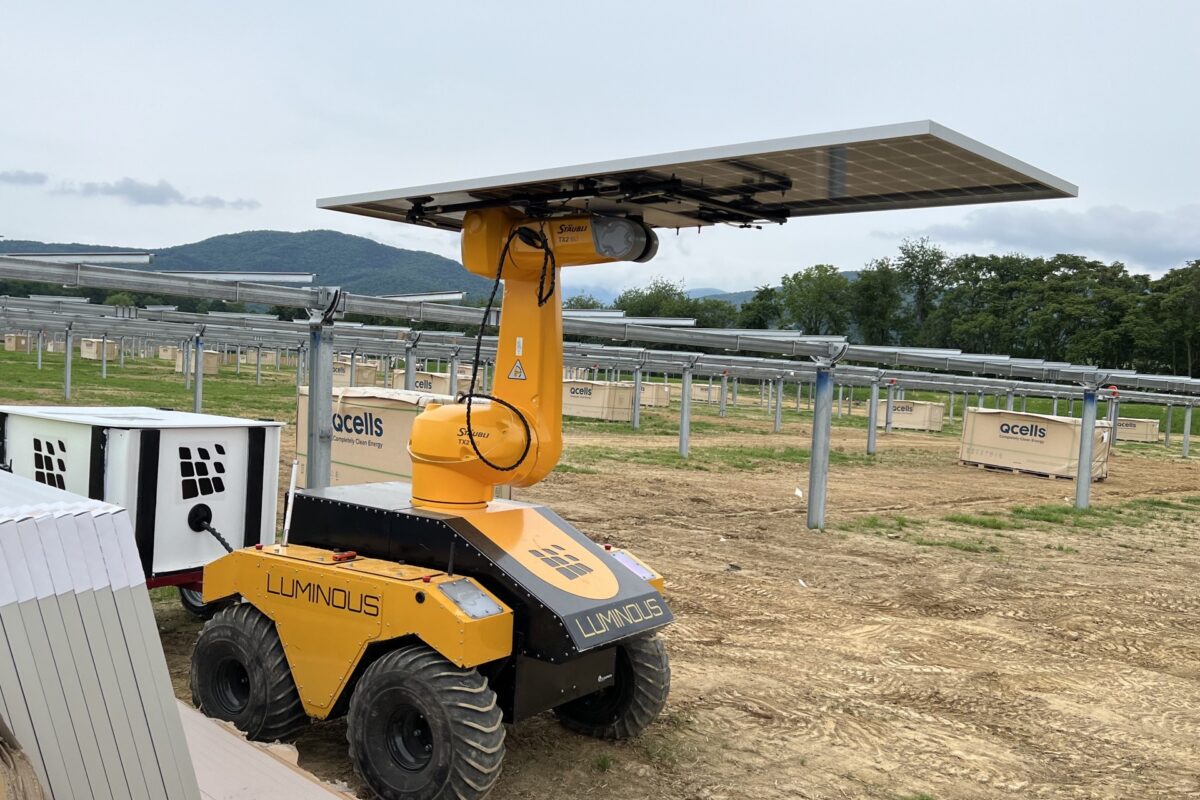Green Gravity, a Wollongong-based startup proposing to use old mine shafts for gravitational energy storage, will begin construction on a new research and development (R&D) facility, dubbed Gravity Lab, in one of the industrial buildings within Bluescope’s Port Kembla Steelworks on the New South Wales south coast.
The facility will be capable of moving 16 separate weighted objects in a sequence to test the capabilities of Green Gravity’s technology.

Image: Green Gravity
The facility will also be co-commissioned with a digital twin. A digital twin is a virtual representation of a physically commissioned system, and can be used to test new components or hypothesis before they are trialled in the physical world.
The startup, founded and headed up by former BHP executive Mark Swinnerton, says the introduction of digital assets into Gravity Lab will quickly enable data to validate its commercial-scale energy storage systems.
It is partnering with both Bluescope and AI specialist xAmplify to realise the Gravity Lab, and is receiving support from software company NVIDIA.
Green Gravity’s concept
The startup is proposing to lift and release ultra heavy weights in legacy mine shafts. The concept is similar to other gravity energy storage technologies, but Swinnerton believes the use of old mine shafts, rather than purpose-built tall towers, will be his competitive advantage.

Image: Green Gravity
This is because redeploying abandoned but very abundant infrastructure lowers both the capital and environmental outlay of its projects. “By re-using mining assets, costs can be kept low,” Swinnterton says. “By using gravity as the fuel, we dispense with consuming the critical water, land, and chemicals which other storage technologies rely on.”
According to Swinnerton, Green Gravity will be able to attach capacity at similar unit costs to pumped hydro, but for substantially less capital outlay. “So you don’t have to pay $700 million (USD 468 million) like you do in some of the big pumped schemes,” Swinnerton previously told pv magazine Australia. “You just say, ‘well, we’ll pay $30 million’. You’ll get less energy, but you’ll get a similar unit cost outcome to the pumped hydro and there’s lots of them.”
Last November, Green Gravity and international engineering heavyweight GHD executed a memorandum of understanding (MoU) to develop new applications for the startup’s storage solution. It also completed domestic capital raises in 2022, but has its sights set on raising substantially more global capital.
Green Gravity claims it has uncovered at least 3 GWh of potential storage capacity from the 175 sites it has assessed and found to be suitable. “I can guarantee you unequivocally that there is more than that available – and that’s just in Australia,” Swinnterton said.
This content is protected by copyright and may not be reused. If you want to cooperate with us and would like to reuse some of our content, please contact: editors@pv-magazine.com.









By submitting this form you agree to pv magazine using your data for the purposes of publishing your comment.
Your personal data will only be disclosed or otherwise transmitted to third parties for the purposes of spam filtering or if this is necessary for technical maintenance of the website. Any other transfer to third parties will not take place unless this is justified on the basis of applicable data protection regulations or if pv magazine is legally obliged to do so.
You may revoke this consent at any time with effect for the future, in which case your personal data will be deleted immediately. Otherwise, your data will be deleted if pv magazine has processed your request or the purpose of data storage is fulfilled.
Further information on data privacy can be found in our Data Protection Policy.